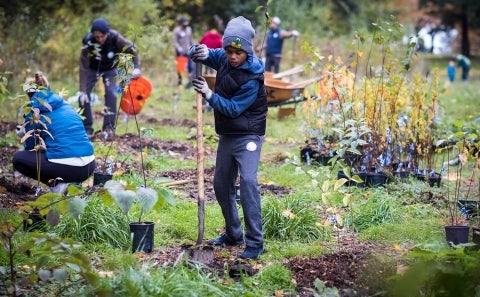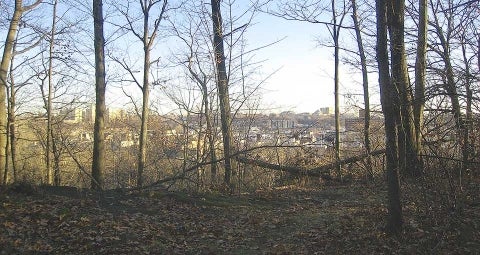In cities across the U.S., natural forest areas are underutilized and municipalities lack the resources for proper management, according to
a landmark report produced by the Yale School of Forestry & Environmental Studies (F&ES) and two partner institutions.
F&ES worked with the New York-based Natural Areas Conservancy (NAC) and The Trust for Public Land to survey 125 organizations, representing 40 states and 111 metropolitan areas with populations of 50,000 or higher. The report found that urban natural areas account for 1.7 million acres of land — larger than Delaware — and need “interventions and substantial investments in management to ensure their long-term health.”
Urban natural areas are essential to an ecosystem’s resiliency, the health of the local public, and a proven combatant of climate change, regulating temperature and flooding. For the majority of people who live in these cities, urban natural areas are also the only wilderness they are regularly experiencing, meaning the benefits of these areas are as much experiential as they are environmental.
The results of the survey showed that the biggest challenges to maintaining urban natural areas are sufficient staff and funding and invasive species, which was listed as the most commonly conducted management activity. Looming threats include pests and climate change, but less than half of the respondents are using appropriate data to tackle such threats.
“We found that many organizations share similar motivations and challenges, but don’t have basic types of data to describe who is using the forest, the forest condition and how it is changing over time,” said
Clara Pregitzer, a Ph.D. candidate at F&ES and a conservation scientist at NAC who co-authored the report. “The findings within this report will allow us to zoom out from the work done in individual cities and explore common trends across the nation, and think about strategies to ensure healthy forests and communities in cities more broadly.”
This report is the first part of a two-phase project. The second phase, slated to begin in fall 2019, will bring teams from 10 U.S. cities to New York to further investigate the trends found in the survey, as well as develop a path forward to bring more awareness and resources to the issue of urban natural areas.
“No single city or organization can address all the challenges urban forested natural areas face and different types of organizations and partners play different and important roles,” said Pregitzer. “These areas must be recognized as regional and national resources that can help to create not only vibrant cities, but a vibrant nation.”
“It appears there is a huge opportunity to develop coordinated managements for sustaining and enhancing these forests. The survey reveals that this will require a new set of networks and approaches, uniquely geared toward managing these trees not as single individuals, but rather collectively as forests,” said
Mark Bradford, a professor of soils and ecosystem ecology at F&ES and a co-author of the report.
The NAC was founded in 2012 by F&ES graduates
Sarah Charlop-Powers ’09 M.E.M. and
Bram Gunther ’91 M.E.M., both of whom were co-authors of the report. The Manhattan-based nonprofit works to restore and conserve New York’s natural lands, including the city’s forests and coastlines. (
Charlop-Powers this week described the findings to CityLab.)
In addition to this report, the NAC has maintained a symbiotic relationship with F&ES since its founding, including a recent
assessment of New York’s trees.

 <div> <div> <div> There are still forests in New York City, and we’re not talking about Central Park. A recent Yale-led study reveals that the forests of America’s largest city are largely native, healthy, and productive. <a href="https://environment.yale.edu/news/article/missing-the-forest-for-the-trees-inventory-new-york-city-trees/">Read more</a></div> </div></div>
<div> <div> <div> There are still forests in New York City, and we’re not talking about Central Park. A recent Yale-led study reveals that the forests of America’s largest city are largely native, healthy, and productive. <a href="https://environment.yale.edu/news/article/missing-the-forest-for-the-trees-inventory-new-york-city-trees/">Read more</a></div> </div></div>
 <div> The city of New York contains more than 20,000 acres of forests and wetlands, a fact that even many New Yorkers might not realize. Sarah Charlop-Powers ’09 M.E.M. is trying to change that. <a href="http://environment.yale.edu/news/article/alum-introduces-new-yorkers-to-the-forest-in-their-own-backyard/">Read more</a></div>
<div> The city of New York contains more than 20,000 acres of forests and wetlands, a fact that even many New Yorkers might not realize. Sarah Charlop-Powers ’09 M.E.M. is trying to change that. <a href="http://environment.yale.edu/news/article/alum-introduces-new-yorkers-to-the-forest-in-their-own-backyard/">Read more</a></div>